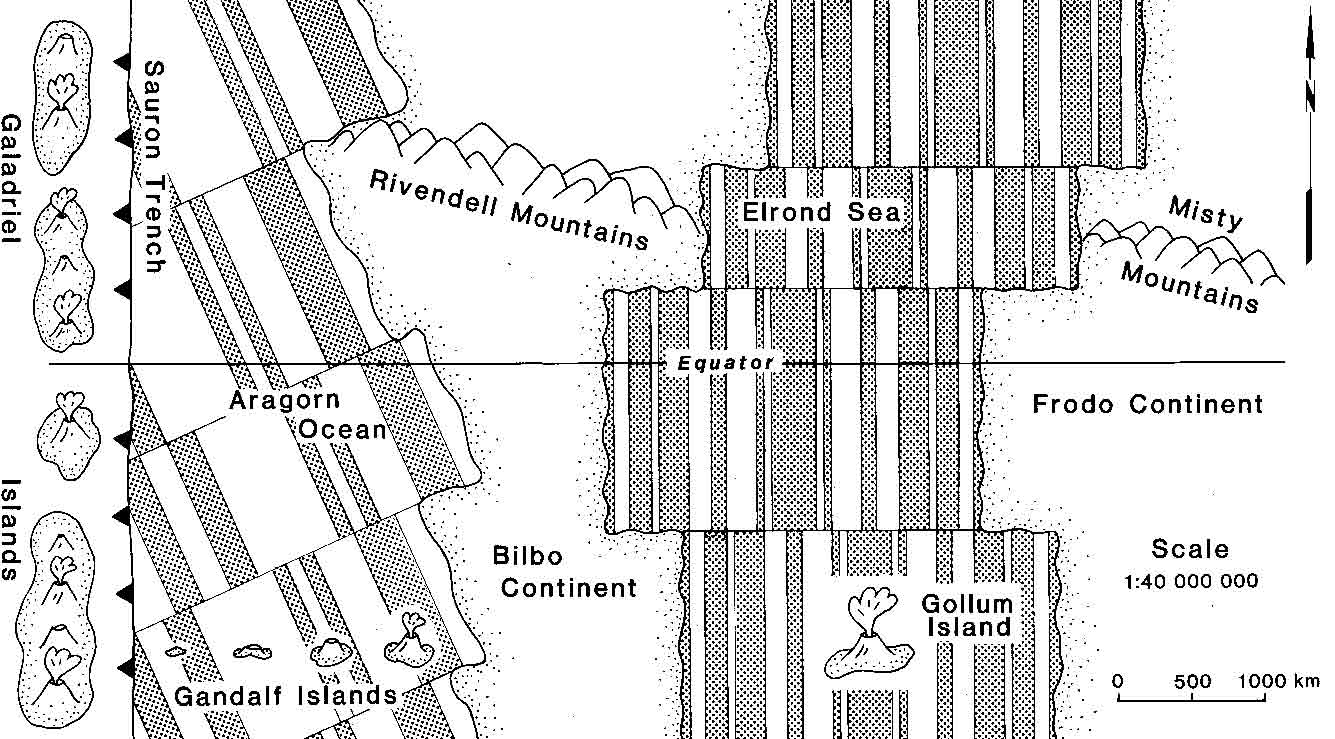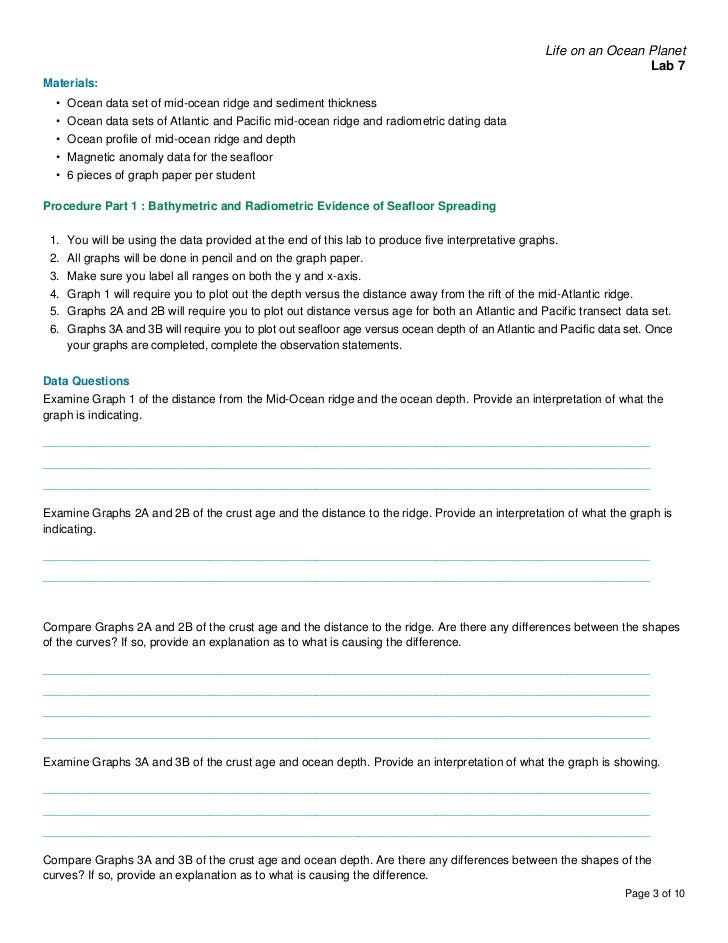Plate Tectonics Lab Manual Answers
In this plate tectonics activity, students analyze the tectonics of a simple fabricated flat planet (called Geoworld) that features continents with ancient mountain ranges, oceans (complete with magnetic 'stripes' and a hotspot volcanic chain), an island arc and a trench. Activities include dating the initiation of sea-floor spreading, determining the sense of offset on transform faults, calculating relative and absolute rates of plate motion, drawing whole-lithosphere cross-sections, and reconstructing past and future plate regimes. These analyses lead to some counter-intuitive conclusions, guiding students toward a deeper understanding of fundamental plate tectonic concepts such as the difference between relative and absolute plate motion.

Learning Goals. Click to enlargeBy working through this activity, students deepen their understanding of fundamental plate tectonic concepts, improve their ability to use mathematics to solve geological problems, develop their 3-D visualization skills, and gain an appreciation of the ever-changing configurations of plates, continents, and plate boundaries. The specific content learning objectives are:. Be able to use the magnetic stripes on the sea floor to determine rates of motion, age of sea floor, history of motion and past and future plate configurations. Be able to draw accurate schematic cross sections of various kinds of plate interactions.
Plate Tectonics Skills Lab Answers

Be able to determine sense of motion on ridge-ridge transform faults. Be able to use hot spots to determine absolute plate motion.
Appreciate that plate boundaries are as mobile as plates are. Be able to use the absolute motion of one plate and the relative motion between that plate and a second plate to determine the absolute motion of the second plate. Understand why we are very certain about plate configurations for the past 200,000 years but that it gets MUCH more difficult to do past reconstructions for times before that. Context for Use.
This activity is ideal for advanced high school earth science courses and for college-level Physical or Historical Geology courses. It could also serve as an introductory activity in a Tectonics course. Before completing this activity, students should:. know the basic characteristics of divergent, convergent and transform plate boundaries;. understand how seafloor magnetic anomalies form;. be able to distinguish between volcanic island arcs and hot-spot volcanic island chains;.
comprehend the term earthquake focus;. be able to identify different types of faults; and. be able to apply the equation distance = rate x time. Description and Teaching Materials. (Acrobat (PDF) 181kB Dec30 08), the Adobe Acrobat version of the student handout. This file should print out exactly as I formatted it with correct page numbers. (Microsoft Word 1.1MB Dec30 08), the Microsoft Word version of the student handout.
Helpful for those who may wish to modify the file a bit. Pagination problems may occur due to variations in computing platforms, operating systems, and printers. Other materials needed: metric rulers, calculators, scissors, glue sticks. An answer key is available upon request by emailing me at abykerk-kauffman AT csuchico.edu Teaching Notes and Tips.
At California State University, Chico, we use the Geoworld activity during a three-hour laboratory period in our Historical Geology course; some students complete it within the three-hour period, but most need some additional time outside of class. The mathematical calculations are challenging for some students, even though they are all based on the simple distance = rate x time equation.
I recommend working through a few sample calculations as a class, applying at least two of the various versions of this equation (e.g. Rate = distance/time; time = distance/rate). In addition to the traditional ways of assessing student learning from this activity (i.e. Grading all of the questions in the activity, or asking questions on an exam similar to those in the activity), one can assess student learning from this activity by assigning students to write a lab report that consists of the more comprehensive questions in the activity. This focuses student attention on the important concepts and decreases the grading load.

To see an example of such an assignment click (Microsoft Word 24kB Dec12 08). Another way to assess student learning and simultaneously go over the lab is to divide the questions among the various lab groups, assigning each group to present their answers to their assigned questions to the rest of the class, illustrating their presentation with overhead transparencies.
References and Resources.